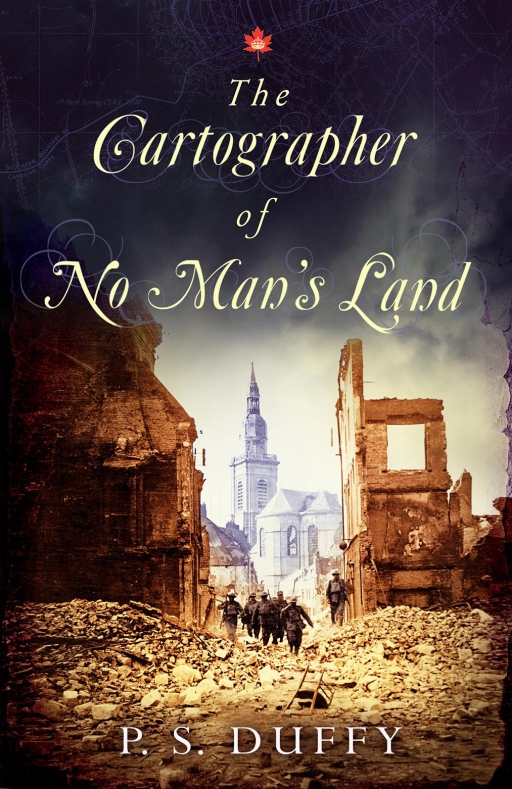Publisher’s Description:
‘Angus MacGrath, artist, sailor and navigator, is lostcaught between a remote wife, a disapproving father and a son seeking guidance. Far from his coastal village in Nova Scotia, war rages in Europe, and among the missing is Angus’s adventurous brother-in-law whose unknown fate sets Angus on an uncharted course, with profound consequences for those he loves and those he comes to love.
Angus defies his pacifist upbringing and enlists to find his wife’s brother. Though assured a safe job as a military cartographer in London, he is assigned instead to the infantry to the blood-soaked mud of France, where his search begins. At home his young son, once wide-eyed about the war, must navigate uncertain loyalties in a village succumbing to war fever.
Separated by the ocean they once sailed together, Angus and his son search for what it takes to survive, each trying in his own way to return to the other. Every character in this exquisitely told story seeks to protect what matters most in the face of war’s upheaval.’
Centenary News Review:
Review by: Eleanor Baggley, Centenary News Books Editor
As we approached the Centenary there was a flurry of new historical fiction based on World War One. It’s something we all expected – the subject, after all, is so rich and lends itself so easily to fiction. I’ve read some novels which have successfully captured the mood of the period and others which never quite grasped it. The Cartographer of No Man’s Land sits comfortably in that first group. P.S. Duffy has an extraordinary sense of the time and of the myriad ways men, women and children dealt with war. This, combined with a compelling story, make The Cartographer of No Man’s Land a novel worth reading.
The novel focuses on Canadian soldiers and the build up to the Battle of Vimy Ridge. The Canadian experience is not one often included in First World War fiction, which is surprising given the significance of their role in this battle. McGrath, the ‘hero’, of the novel is an artist and expert navigator who joined up to find his wife’s missing brother. This quest provides the main impetus for the novel, but it soon becomes very clear that this is not just a case of lost and found. In fact, the finding happens early on, at which point we realise that this is a truly multi-faceted book and one which is exploring the entirety of the human experience of war.
There are two narrative strands running parallel throughout – McGrath’s on the Western Front and his son Simon Peter’s at home in Nova Scotia. This dual narrative allows Duffy to demonstrate both actions and consequences. Perhaps the most emotive is the consequence of McGrath finding his brother-in-law.
Duffy portrays the relationships between soldiers with a sensitivity to the nuances of human behaviour. Although these relationships are important and central to the novel, the wartime relationship which is most poignant is that between McGrath and a Frenchwoman, Juliette, and her son, Paul. McGrath and another officer are billeted in their house and the bond which grows between McGrath and Paul reflects a father/son bond, one which McGrath probably simultaneously wants and does not want with his own son.
After a slow start, The Cartographer of No Man’s Land builds into a truly rich novel. It is detailed and Duffy’s knowledge is clear (shell shock and execution for desertion are just two subjects introduced very early on), but it never feels forced. Occasionally historical fiction of this kind can read like a check list of tropes, but here Duffy works important elements of the war into the tale so that they are inextricably linked. There is no jarring.
For something slightly different or an alternative way of thinking about the soldier/civilian experience, I would highly recommend this novel. Not only is it a revealing examination of the transformative effect of war, it is also a beautifully written novel.
What do you think about this book or review? Please add a comment below.
